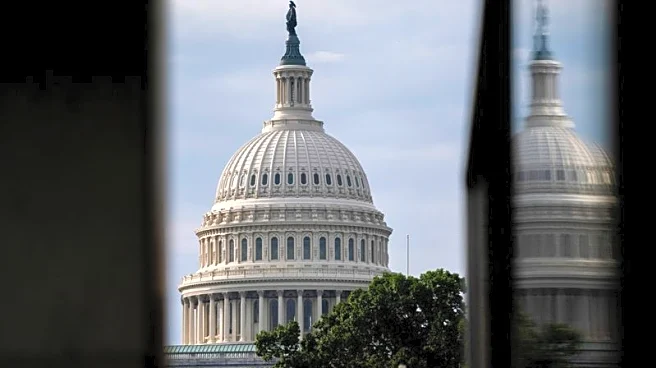What is the story about?
What's Happening?
The U.S. Department of the Treasury has released a contingency plan for the Internal Revenue Service (IRS) in anticipation of a possible government shutdown. The plan outlines that up to half a workday would be required to complete shutdown activities, with 74,299 IRS employees expected to remain on 'pay status.' However, 407 employees may be placed on 'non-pay status.' The American Institute of CPAs (AICPA) has expressed concerns about the impact of a shutdown on taxpayers and tax professionals, particularly regarding the timely filing of returns and obtaining refunds. The IRS plans to continue certain operations using funds from the Inflation Reduction Act, although specific activities are not detailed. The government shutdown is expected to begin on October 1 unless a continuing resolution is agreed upon by Congress.
Why It's Important?
A government shutdown could significantly disrupt the operations of the IRS, affecting taxpayers and tax professionals across the country. The inability to file returns, pay taxes, or obtain refunds in a timely manner could lead to financial strain for individuals and businesses. Additionally, the delay in processing tax returns and issuing refunds could impact the upcoming tax filing season. The use of Inflation Reduction Act funds to maintain some operations highlights the importance of contingency planning in mitigating the effects of a shutdown. The situation underscores the broader implications of political gridlock on essential government services and the economy.
What's Next?
If the government shutdown proceeds, the IRS will implement its contingency plan, which may lead to reduced services and delayed tax processing. Stakeholders, including taxpayers, tax professionals, and businesses, will need to prepare for potential disruptions. The outcome of negotiations between Democrats and Republicans in Congress will determine whether a continuing resolution can be reached to prevent the shutdown. The situation may also prompt discussions on the need for more robust contingency planning and funding mechanisms to ensure the continuity of critical government functions during budgetary impasses.
AI Generated Content
Do you find this article useful?














